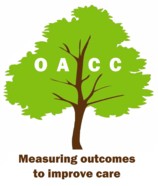|
POS - How to report
Reporting of individual POS item and overall POS profile scores helps with care planning, care evaluation, and multi- and inter-disciplinary team work. Discussing individual item and profile scores with patients aids their involvement in their own care and may prompt questions about interventions, prognosis and diagnosis. Accurate reporting in a format that is accessible and clear is therefore important.
There are some general principles that aid reporting of POS scores, such as:
Different strategies can be used to help report POS scores in a meaningful way to different audiences. This may involve using Excel databases to record scores over time and, as illustrated in the example below, visually depicting scores that have been collected.
 For clinical reporting in team meetings it is useful to explain when the POS data were collected, any changes that have been noticed and, where possible, the meaning of these changes to the patient. Establishing regular POS review dates within clinical meetings is helpful.
For audit purposes, POS data from several patients and or care episodes are usually reported upon. These data are de-identified at the point of data entry and before reports are generated. For research purposes, POS data are usually presented in a summed or aggregated manner. Patients and organisations are usually not identified or identifiable, and findings are published for wide dissemination.
Guidance on how to report outcome measurement data is available, and training may assist in developing reporting competencies. |
POS supporters and collaborators
|
You are not logged in. Login or Register
« How to interpret
© 2012 Cicely Saunders Institute
Terms and conditions
Site map
Contact
How to implement »







